B.FLT.5018 - Feasibility of feedlot manure and effluent value adding technologies and strategies
Feedlot manure and effluent are rich sources of nutrients and carbon. There is a growing demand for these materials from the cropping sector to improve nutrient use efficiency, sequester carbon in soil and improve soil health.
| Project start date: | 30 January 2024 |
| Project end date: | 01 July 2025 |
| Publication date: | 26 November 2025 |
| Project status: | Completed |
| Livestock species: | Grass-fed Cattle |
| Relevant regions: | National |
|
Download Report
|
|
Summary
As the nutrient composition of feedlot manure is a key component of its selling price, opportunities to improve this value or the nutrient availability to increase demand for and the selling price of the product are of key interest. Research-proven strategies and technologies to value add by-products, however, can be challenging to adopt and may produce negative environmental outcomes and/or result in higher costs of production and increased management complexities with little to no financial return.
Objectives
1. Perform a survey of the Australian lot feeding industry, and manure and effluent end-users to determine current volumes, handling, revenues and barriers to further adoption.
2. Perform a global technology scan and undertake a desktop-based feasibility assessment for technologies and strategies suitable for value adding feedlot manure and effluent in Australia.
3. For a shortlist of technologies/strategies for solid manures, liquid effluent and truck effluent, conduct an ex-ante cost-benefit analysis and life cycle assessment, extrapolating the results to whole-of-industry level.
Key findings
For the 2023 Financial Year, annual manure generation was calculated to be 1.8t/Standard Cattle Unit (SCU) resulting in the generation of more than 2.1 million tonnes of manure across the feedlot industry. Additionally, 4,000ML of effluent was generated and 107ML of truck effluent. Despite the large volumes of this valuable resource, the challenges faced by feedlots in processing and marketing manure products result in a loss of $0.57 for every tonne of manure sold. The sale of stockpiled manure products accounted for roughly 70% of all manure sold with raw and composted manure making up 15% of the market each. Around 35% of manures are used on feedlot owned land. A global technology search was also conducted to assess the manure and effluent valorisation technologies. The assessment of the technologies showed that co-composting, composting and pelletising of the manure to formulate organo-mineral fertiliser is the most promising technology in terms of physical stability, nutrient value and performance in the soil.
Benefits to industry
This research set out to examine benefits from treating feedlot manure and effluent to deliver better environmental or economic outcomes. These outcomes were difficult to demonstrate from the technical perspective, but other learnings were established. These include that manure products continue to be undervalued and are perhaps the greatest emerging opportunity that can arise from a renewed focus on the value of manure. This could be stimulated by focusing on building soil carbon. Potential new opportunities for industry were identified, including strategies to engage with local grain producers to supply manure products in exchange for discounted grain.
MLA action
MLA to develop next steps R&D strategy guided by the Australian Lot Feeders' Association.
Future research
Recommendations for industry include identifying opportunities to engage with end-users on a targeted basis, including to promote circular economy principles, soil health benefit of organo-mineral fertiliser and to alternatively market manure products as a soil carbon amendment for highly degraded cropland and for resilient soil profile. Recommendations for future research include the development of best practice pen cleaning and maintenance guidance to reduce contamination of feedlot manure to improve the consistency and value of final products. In addition, further research is needed to map nutrient demand (from broadacre cropping, horticulture, etc.) against organic nutrient availability (reflecting volumes produced from feedlots, piggeries and the poultry industry) to understand the potential market at a local level.
More information
| Project manager: | Matt Van der Saag |
| Contact email: | Reports@mla.com.au |
| Primary researcher: | Queensland Department of Fisheries and Forestry - Head Office |


